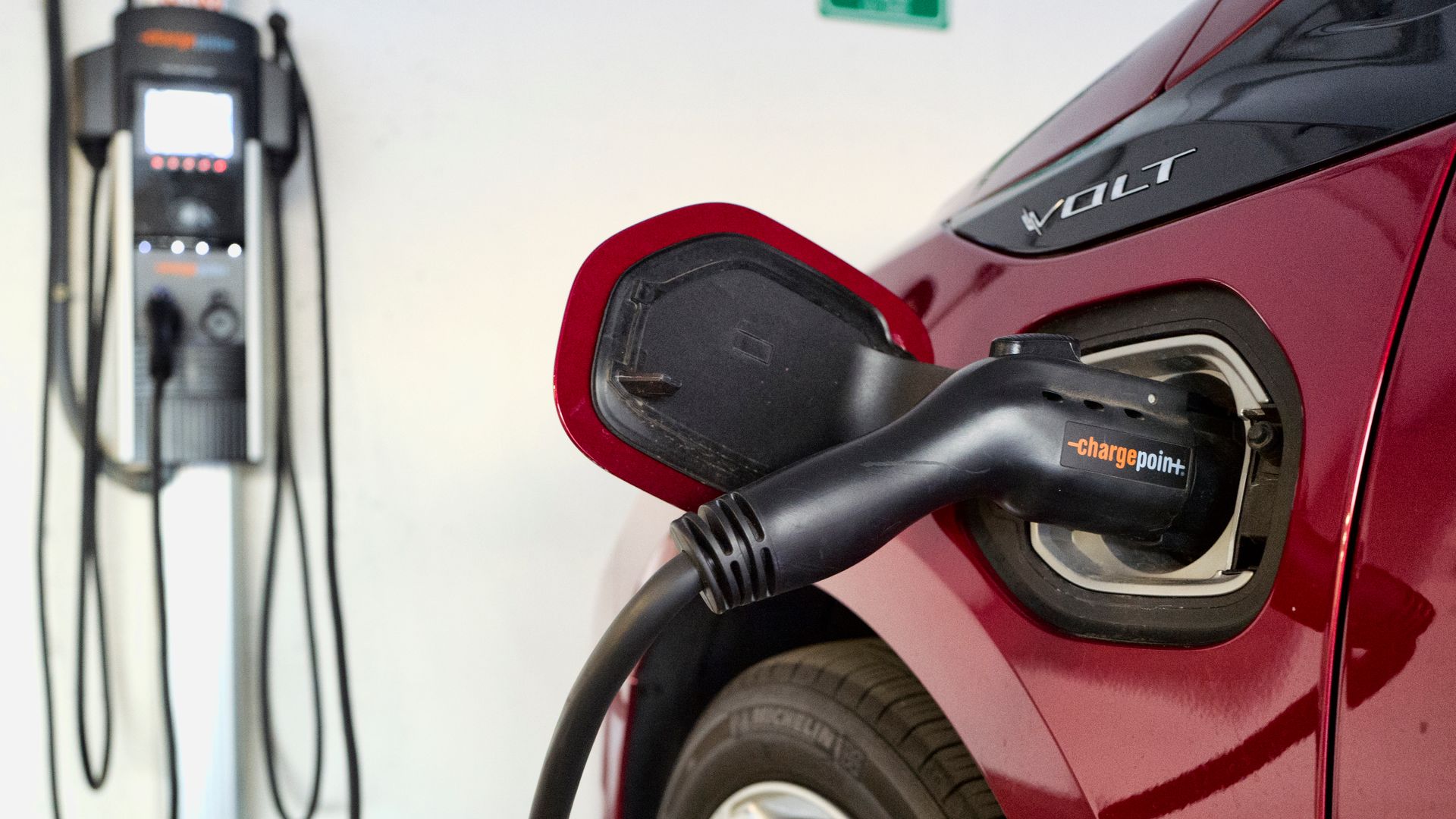
[JACK AYLMER]
THE ENERGY NEEDED TO FULLY CHARGE AN E-V BATTERY – PULLS ABOUT THE SAME AMOUNT OF POWER THAT’S REQUIRED TO POWER AN ENTIRE HOME DURING PEAK DEMAND.
THAT CONCENTRATED DRAIN OVER AN EXTENDED PERIOD CAN SERIOUSLY STRESS ELECTRICAL GRIDS – AND STRAIN UTILITY PROVIDERS.
NOT IDEAL.
BUT WHAT IF THERE WAS A WAY TO PUT ENERGY BACK INTO THE GRID – AT TIMES WHEN IT’S NEEDED THE MOST.
AND WHAT IF THOSE WHO CHIPPED IN – EARNED MONEY IN THE PROCESS…SORT OF LIKE LOANING OUT ENERGY.
Moatassem Abdallah
“This concept is like very similar to Airbnb, like if you have like a space that you actually don’t use, so why don’t you just like rent it out and generate like money out of it. So it’s the same concept like with electric vehicles, so if you have your vehicle just sitting like and doing nothing.”
[JACK AYLMER]
THAT’S MOATASSEM ABDALLAH. HE’S AN ASSOCIATE PROFESSOR AT CU-DENVER’S CIVIL ENGINEERING DEPARTMENT AND ONE OF THE MINDS BEHIND A NEW STUDY AIMING TO EXPLORE THE POTENTIAL BENEFITS OF ‘BI-DIRECTIONAL CHARGING’ OR ‘TWO-WAY CHARGING’.
HERE’S HOW IT WORKS FROM ANOTHER CONTRIBUTOR OF THE STUDY:
Manish Shirgaokar
“When peak pricing happens, where surge pricing happens in the energy market, you could leverage your private battery to to get a subsidy essentially, on your own consumption.”
[JACK AYLMER]
LET’S BREAK THAT DOWN.
BASICALLY
AN EV OWNER WITH A COMPATIBLE VEHICLE WOULD HAVE THE OPTION TO SELL ELECTRICITY BACK TO THE GRID –
Moatassem Abdallah
“You can actually sell like the energy that you have in your electric vehicle for certain hours of the day and then recharge it again, when there’s like lower energy demand in the day. So like it’s it’s going to be just generating like, additional income from just like a stationary asset that you have.”
[JACK AYLMER]
IT’S NOT JUST ADDED POCKET CHANGE –
TWO-WAY CHARGING CAN ALSO BE BENEFICIAL DURING OUTAGES OR SEVERE WEATHER SITUATIONS.
ACROSS THE US, WE’VE BEEN SEEING MORE OUTAGES. AND EXPERTS AT
THE INTERNATIONAL ENERGY AGENCY WARN CURRENT INFRASTRUCTURE IS TOO WEAK TO KEEP UP WITH THE CURRENT TRANSITION AWAY FROM FOSSIL FUELS.
RECENT WINTER STORMS, THE WILDFIRES IN MAUI, AND HURRICANE IDALIA ALL LED TO POWER GRID MALFUNCTIONS AND EXPOSED VULNERABILITIES.
ALL SITUATIONS WHERE TWO-WAY CHARGING COULD HAVE HELPED.
Moatassem Abdallah
“The integration of electric vehicles to the grid, this can solve like situations where we have like power outages. So in this case, you can actually use your vehicle as a backup.”
The energy grid goes down, it’s cold or there’s a wildfire or something else that’s happened. You have your own car that can power up your house for a couple of days.
[JACK AYLMER]
IT’S A CREATIVE SOLUTION, BUT ALSO AN EXPENSIVE ONE. RESEARCHERS SAY THEY’RE WORKING ON THAT.
[Shirgaokar]
“Think of a low income, affordable housing community six apartments … What if we had an EV battery on wheels that were shared within the six apartments that then be an affordable model?”
[Shirgaokar]
“I’m a university professor, my spouse works, we could, in theory, get a bidirectional charger for our garage. But are we willing to spend $7,000 To do that, but $12,000 To do that? … The answer is no … but communities in need, often can leverage these services through subsidies that exist at the local and state government. So I’m hopeful.”
[JACK AYLMER]
THERE ARE CONCERNS TWO-WAY CHARGING ISN’T GOING TO RESONATE WITH UTILITY PROVIDERS.
[Shirgaokar]
Utility companies aren’t going to be happy, as you can tell, because the model that fermata and others are proposing is that when peak pricing happens, where surge pricing happens in the energy market, you could leverage your private battery to to get a subsidy essentially, on your own consumption.
[JACK AYLMER]
WHILE IT COULD HELP IN AN EMERGENCY – ROLLING OUT THIS TECHNOLOGY COULD END UP COSTING ENERGY COMPANIES A LOT OF MONEY.
[Shirgaokar]
“Utility companies are observing this very carefully. They know that there is a risk to their power. And they I think they are playing along at this stage, which is wonderful, because we need them at the table as the key stakeholder … if enough players in, in, in a smaller community, we’re able to micro grid, then you could actually make a dent in in the monopolies that utility companies are evolving towards.”
[JACK AYLMER]
TWO WAY CHARGING HASN’T REACHED THE MAINSTREAM MARKET, AND THE CU DENVER STUDY IS STILL IN ITS EARLY STAGES.
HOWEVER, EXPERTS BELIEVE THAT ONE DAY, IT COULD BECOME A GAME CHANGER
[Shirgaokar]
“I think this could really change the narrative going forward on energy, and of how consumers think of energy pricing, what bills they get to the end of any month.”







